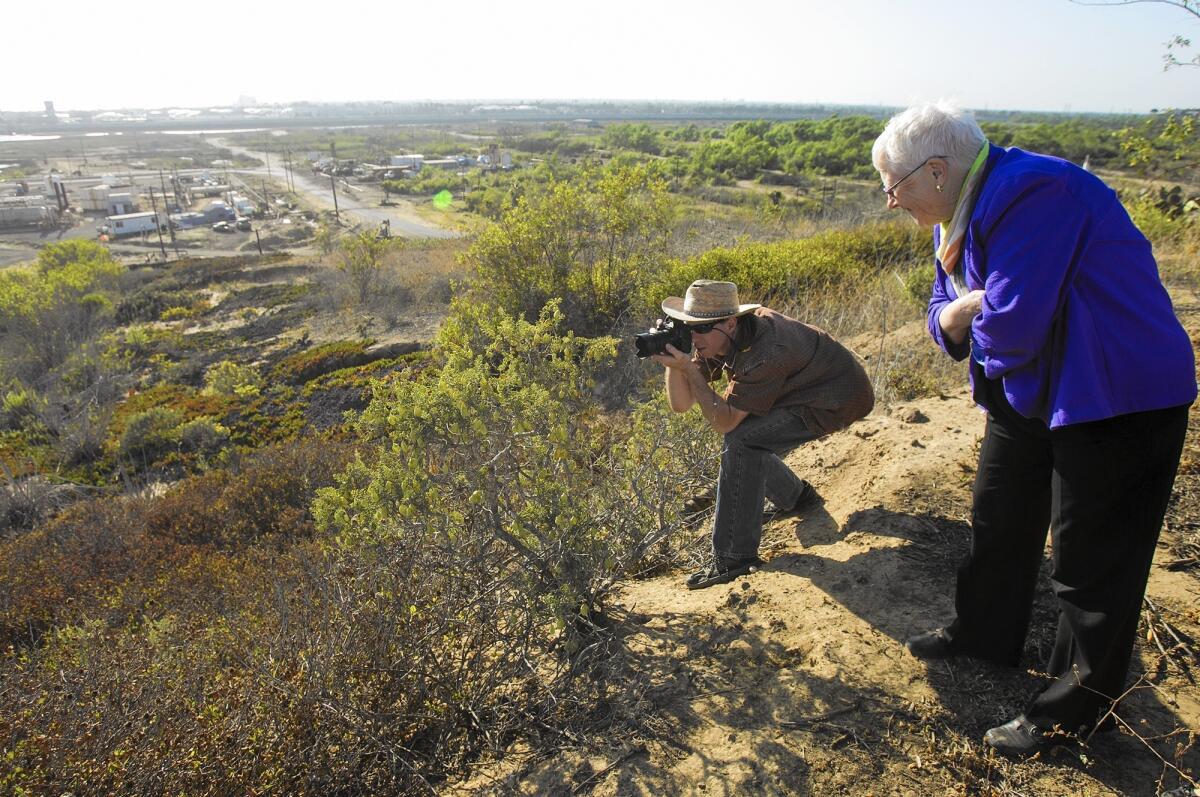Banning Ranch developer plans to make scaled-down project a group effort

- Share via
The developer intending to build homes, businesses and parks on Banning Ranch — one of the last privately owned and undeveloped pieces of land along Orange County’s coast — is heading back to the drawing board to craft a scaled-down version of the project, but this time, other groups will be at the table.
Newport Banning Ranch LLC plans to meet with California Coastal Commission staff and members of the Banning Ranch Conservancy, a preservation group that opposes building on the land, over the next several months in preparation for its next hearing before the Coastal Commission in January, according to Chris Yelich, a principal with Brooks Street, a real estate development firm in Newport Beach that is associated with the project.
The commission voted Wednesday during a meeting in Long Beach to postpone making a decision on the plan. The panel has the final say over projects along the state’s coastline.
“We’re going to go back through our land plan and make adjustments where there have been issues raised by coastal staff,” Yelich said. “We’re looking forward to working with coastal staff and the Banning Ranch Conservancy and talking with them about some of their ideas. I think it’ll be a work in progress over the next few months.”
Newport Banning Ranch initially sought to build 1,375 homes, a 75-room boutique hotel, a hostel, 75,000 square feet of retail space and several parks on about 95 acres of the 401-acre expanse adjacent to the Santa Ana River overlooking West Coast Highway.
After seeing that commission staff was recommending that the panel deny the project, the developer reduced the number of proposed dwellings to 1,175, meaning that 80% of the land would remain open space.
However, the downsizing didn’t satisfy the commissioners, who voted unanimously to delay their decision on the project’s development permit for 90 days. The move will allow Newport Banning Ranch to come up with a more modest development that commissioners feel adheres to the California Coastal Act, which prioritizes access and preserving “environmentally sensitive areas.”
Though the area has been used for oil operations since the 1940s, many animal species, including burrowing owls, the California coastal gnatcatcher and endangered San Diego fairy shrimp, have remained on the land.
Commission staff recommended denial of the project because it “would have significant adverse impacts upon terrestrial and vernal pool [environmentally sensitive habitat], including impacts to important/rare upland habitats and wildlife species that are an important part of the existing functioning ecosystem that includes both the uplands and lowlands habitat areas.”
The staff report indicated, and commissioners agreed Wednesday, that the agency would consider a smaller version of the project.
The developer also would have to gain approval from the California Department of Conservation’s Division of Oil, Gas & Geothermal Resources, which would oversee oil cleanup and consolidation efforts, commissioners said.
“There has to be a project that is less invasive,” commission Vice Chairwoman Dayna Bochco said. “You chose a place that is very, very sensitive.”
It wasn’t the first time Newport Banning Ranch has agreed to adjust the size of its project. During the nine years that the development plan has wound its way through Newport Beach’s Planning Commission and City Council, eventually reaching the Coastal Commission, the proposal has diminished significantly, Yelich said.
Specifically, he pointed to the elimination of a contested 19th Street bridge, a reduction in the size and number of roads and most recently the slimming of the housing element.
Yelich said he didn’t want to speculate on how the proposal may look when presented to the commission in January, but he said, “We’re really optimistic about coming up with a new plan.”
Steve Ray, executive director of the Banning Ranch Conservancy, said that while it remains the group’s intention to purchase the property and preserve it as open space, members are willing to sit down with the developer to discuss plans for the project, as long as they are given access to the site.
“The question is going to be where the development is going to be proposed and of what size will it be proposed,” Ray said. “If they continue the way they have been … we’re going to have a problem.”
For decades a chain-link fence has surrounded the scrub- and grass-covered bluffs, wetlands, dirt roads and active oil wells, shielding them from public access. Ray said some sort of barricade has surrounded the property since around the time oil drilling began. He said he remembers the chain-link fence going up in 1999.
Ray recalled the group having discussions in 2000 about purchasing the property, hoping to clean up the land, take down the fence and turn it into a place where people could experience nature.
Since the group has not been able to set foot on the land, it has had to get creative in its quest for information, Ray said.
“We fly over the property all the time with drones,” he said. “They have cameras mounted on them, so we are able to take photos fairly close to the ground. That’s how we were able to document all the vernal pools.”
Ray said the group also has used a member’s plane with a camera mounted on the front that is “so powerful you can almost see the buds of a flower when we take a photo.”
Though the developer and preservationists disagree on how the land should be maintained, they both hope the oil fields can be cleaned up and that the land can again be opened to the public.
“Hopefully the community will be happy that the Coastal Commission wants the property open to the public,” Yelich said. “We’re proposing to clean up an existing oil field and turn it into a community asset. That’s what we’re most excited about.”